“Three hundred sixty lanterns burn bright,
Three thousand four hundred bells ring in the wind.
Best is the cloud-piercing tower of Tianning,
Yet no stairway leads up to the blue beyond.”
When it comes to religious landmarks in Beijing, most people immediately think of the famous Baiyun Temple. But just across the river from it stands a quiet and far less visited Buddhist site—Tianning Temple. Hidden in plain sight, this ancient sanctuary houses the oldest surviving brick pagoda in Beijing, a rare relic from the Liao dynasty, shrouded in history, legend, and architectural brilliance.
Misidentified as Sui Dynasty
The temple complex of Tianning, in its current form, is relatively new and unremarkable. But the pagoda within its walls tells a very different story—one tangled in centuries of debate and mystery.
For a long time, scholars believed this pagoda dated back to the Sui dynasty (581–618), based on an inscription left by Emperor Qianlong of the Qing dynasty. However, this claim lacked solid historical evidence and was regarded with skepticism by modern historians.
It wasn’t until 1935, when renowned architects Liang Sicheng and Lin Huiyin mentioned the Tianning Pagoda in their seminal work Notes on Suburban Architecture, that a more rigorous method of dating was proposed. They emphasized the importance of comparing historical records with architectural features—a foundational method in dating ancient Chinese buildings.
One of the key clues was the pagoda’s shape: an octagonal design. The oldest known octagonal brick pagoda in China is the Pagoda of Chan Master Jingzang, built during the Tang dynasty’s Tianbao period (742–756 CE). This comparison strongly suggests that Tianning’s pagoda must have been built in the Tang dynasty or later.
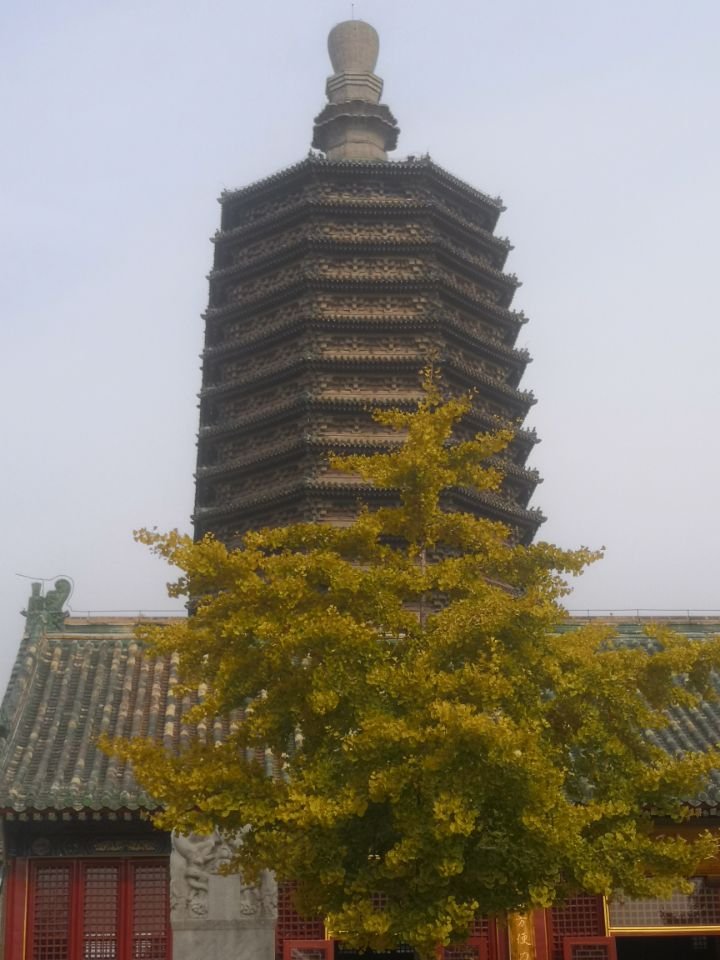
The Tianning Pagoda is a thirteen-story structure with densely stacked eaves, a style known as mi yan ta in Chinese. Its entire base is intricately carved in the form of a Sumeru pedestal—a Buddhist architectural element symbolic of the sacred Mount Sumeru. Notably, this design did not appear in Tang dynasty architecture.
In fact, most Tang-era pagodas featured stepped corbel eaves (die se chu yan) and lacked dougong—the complex wooden bracket systems that support eaves and roofs. In contrast, the Tianning Pagoda includes a sophisticated arrangement of dougong beneath the eaves, with components such as jixinzao (bracket arms aligned with the main beam) and xiegong (angled brackets). These elements only began to appear around the Five Dynasties period and the early Song dynasty, placing the structure’s likely origin much later than originally thought.
Other architectural features—the round arched doorways, door panels, carved reliefs, railings, and “hu men” (urn-shaped niches) on the Sumeru base—all closely resemble styles from the Liao and Jin dynasties.
After comparing these stylistic elements, Liang Sicheng concluded that the pagoda was most likely built in the late Liao dynasty. Elements such as the hu men, guardian figures, and stone lions may have been added or restored during the Ming or Qing dynasties.
The mystery was finally laid to rest in April 1992, when the pagoda underwent a major renovation. During restoration work at the top of the tower, a white marble stele was discovered. After examination, it was identified as an original Liao-era construction inscription, confirming that the pagoda was completed in the ninth year of the Tianqing reign (1119 CE).
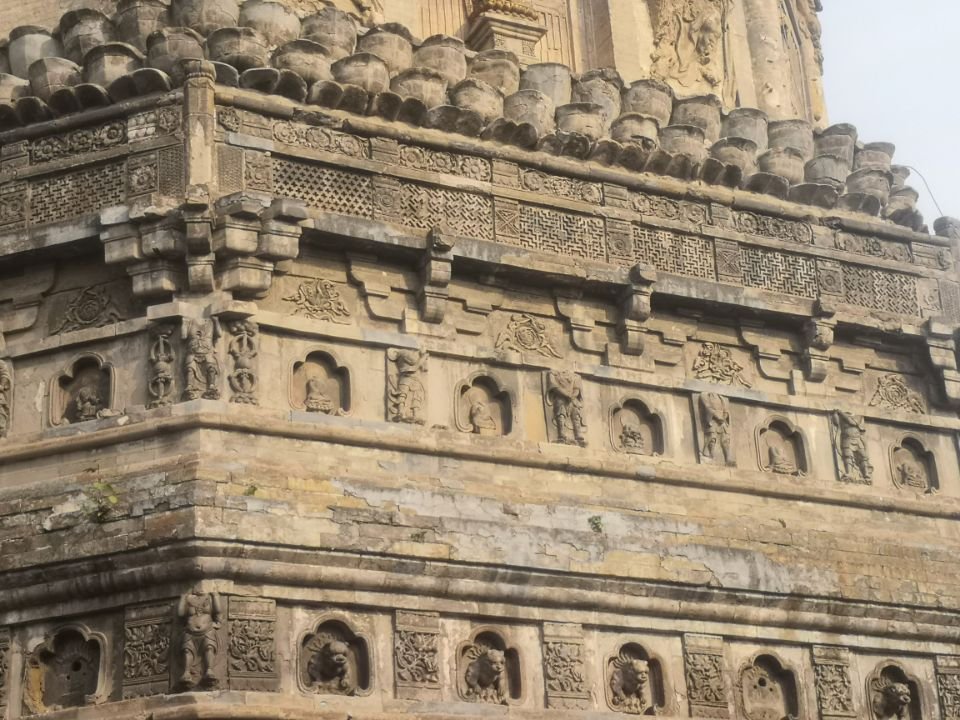

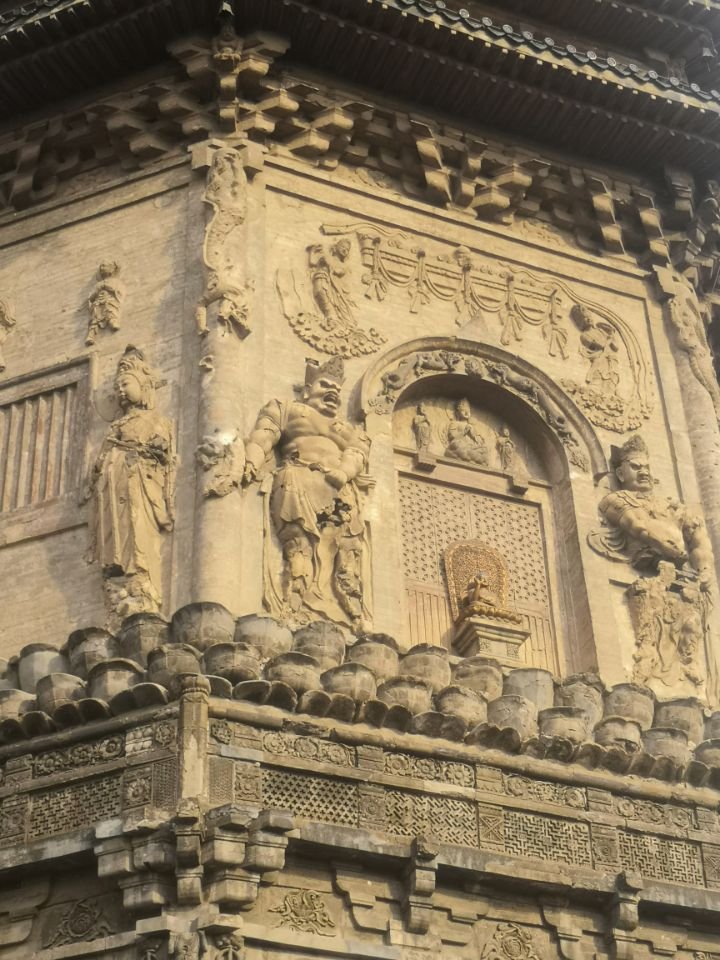
Historical Turning Point
It is worth noting that just one year after the completion of this pagoda, the Liao royal family split apart; four years later, the Liao emperor was captured by the Jin dynasty, signaling the end of the kingdom. This pagoda may have been built to pray for the nation’s fortune, but unfortunately, it brought little luck to the already precarious Liao dynasty. Instead, it became a solemn witness to the fall of a kingdom.
Purpose: Buddhism or National Prayer?
During the Liao dynasty, the Tang-era Youzhou (modern Beijing) served as one of the Liao’s five capitals, known as Nanjing (Yanjing).
Because the ancient Khitan people believed in Buddhism, and since Tianning Temple stood beside the imperial palace of Yanjing, this tall and magnificent brick relic pagoda was constructed to promote Buddhist teachings.
The Tianning Pagoda is the oldest surviving brick pagoda in Beijing and stands as a testament to Beijing’s history as the capital of five dynasties.

Unsolved Mysteries: Buddha’s Light & Relics
The Shadow of the Brahma Palace Tower
During the Ming and Qing dynasties, the “Shadow of the Brahma Palace Tower” of Tianning Temple was included among the “Eight Scenic Spots of Wanping” in Beijing.
It is said that every noon, even when the main doors of the Great Hall of Tianning Temple are closed, sunlight still streams through the cracks, and at that moment, the entire shadow of the Tianning Temple Tower perfectly appears inside. Ancient people said: this is not merely a tower’s shadow, but the gathered radiance of Buddha’s relics captured within the shadow — the Buddha’s light itself.

Relics Beneath the Tower
According to legend, after the passing of Buddha Shakyamuni, his disciples, aiming to spread Buddhism in Central China, presented a package of Buddha’s true relics to Emperor Wen of the Sui dynasty. Emperor Wen then decreed that each of the thirty prefectures in Central China build a secret tower to enshrine these relics. Both Famen Temple and Tianning Temple were among these.
However, Tianning Temple Tower was rebuilt during the Liao dynasty, several hundred years after the Sui’s Renshou era. The tower itself “has no stairs to climb, as it is solely meant to house Buddha’s relics, not for sightseeing.”
As the Liao dynasty is often considered a “lost kingdom” with scarce historical records, it remains nearly impossible for modern scholars to verify whether the tower was truly built to protect Buddha’s relics.
Given the tower’s long history and significant damage—especially from the Tangshan earthquake—whether such phenomena as the shadow of Buddha’s light actually existed remains uncertain.
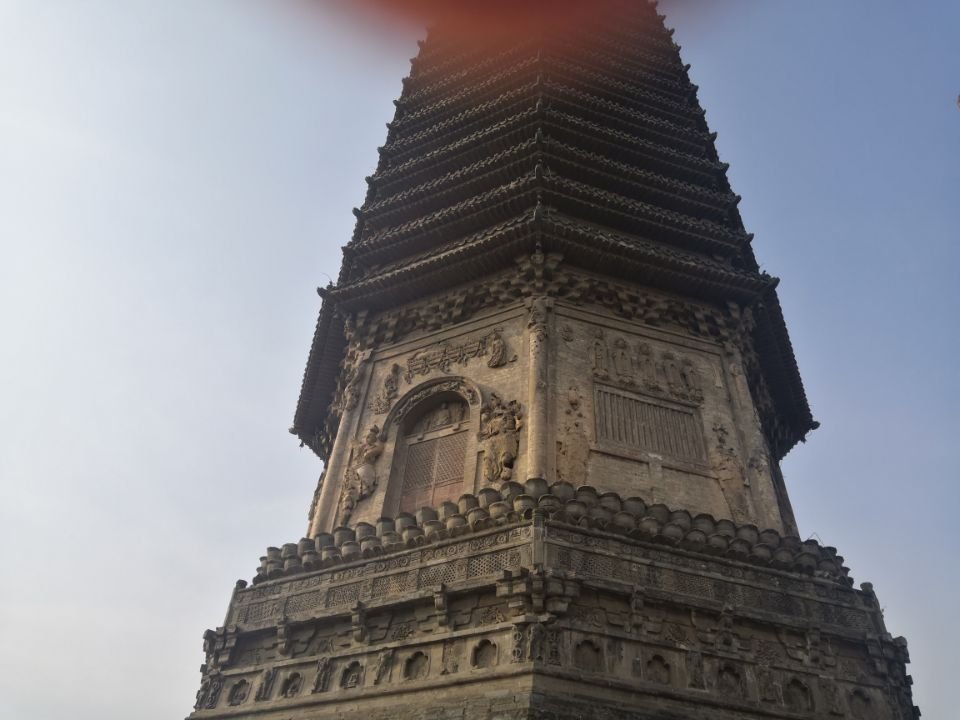
Visiting Tianning Temple
1. Tower Sculptures
The lotus flowers, lion heads, and guardian figures carved on the tower are full of dynamic energy and detail. Although weathered by time, their artistic value remains visible—especially on the north side, where Beijing’s persistent northwest winds have caused the most damage.
2. Nunnery Atmosphere
Tianning Temple is a nunnery. During my visit, I encountered several female masters. In one meditation hall, a lecture on women’s virtues was underway, attended mostly by middle-aged women. The atmosphere was calm and authentic.
3.Flora and Practice
During the blooming season, the temple’s flowers are in full bloom. Nearby, a master practiced qigong amidst the flowers, creating a scene full of serene movement and meditative grace.
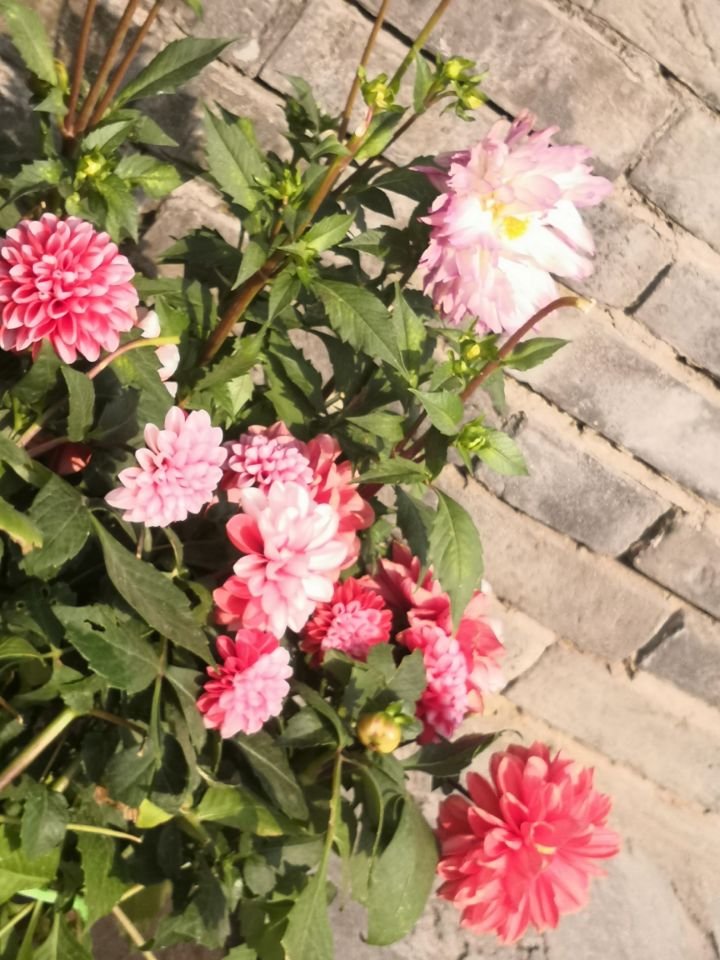
4. The “Twin Towers” View
Next to the temple stands a tall smokestack from a former thermal power plant. While some visitors feel it disrupts the ancient landscape, this chimney has coexisted with Tianning Temple Tower for nearly 40 years, gradually becoming an unconventional landmark itself.
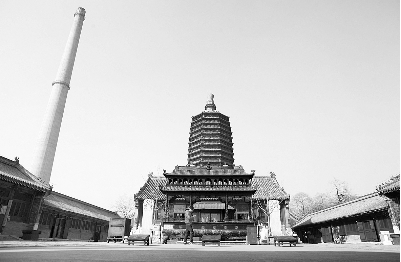
Conclusion: Historical & Cultural Significance
As Beijing’s oldest brick tower, Tianning Temple Tower showcases the exquisite craftsmanship of the Liao dynasty and reflects the evolution of northern Buddhist culture alongside the rise and fall of empires. This “tower you cannot climb” silently stands in a corner of the modern city, quietly guarding the echoes of history.
